
Defibrillation from a virtual heart simulation
- Defibrillation is an essential medical equipment for the treatment of cardiac arrhythmias patients.
- But defibrillator can cause damage in not only to the cardiomyocytes but also to the surrounding cells because of high- current.
- Therefore development of defibrillation mechanism showing the effect at low-current electric shock is required.
- The purpose of this paper is to find the most efficient biphasic waveform using defibrillation.
- We first constructed 2-D ventricular tissue model, and we used variable biphasic waveforms (rectangular-, truncated exponential-, ascending-, oscillating-biphasic waveform, and others) with variable strength.
- This study used bidomain method to analyze electrical conductivity on ventricular, and a finite element method to discretize the 2D domain spatially.
- We compared general biphasic waveforms with new ones.
- In conclusion, the analysis of results could be useful to develop more efficient defibrillation waveforms.
Heart disorder(Arrhythmia)

- Normal : Regular propagation of electric wave in cardiac tissue
- Tachycardia : Self-sustained reentry wave (vortex-like pattern, fast heart rhythm)
- Fibrillation : Irregular reentry wave (vortex, fast and irregular heart excitation)
→ This complex vortex (reentry wave) is induced by the combinational effects of cell, tissue, and organ !
Virtual defibrillation process
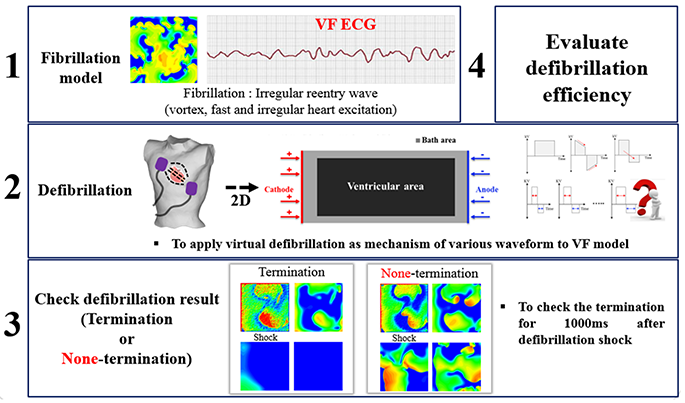
Method Structure & Mechanism
Electrophysiological model

Analysis 2D model for defibrillation
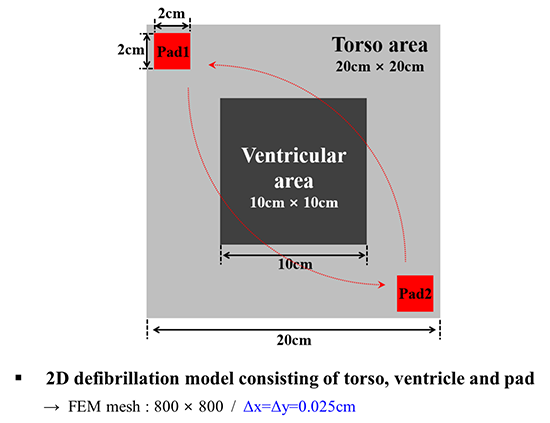
Electrophysiological model
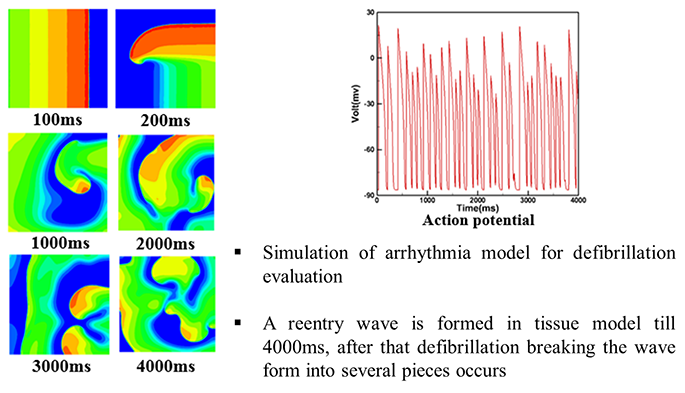
Defibrillation shock waveforms (Variable waveforms)
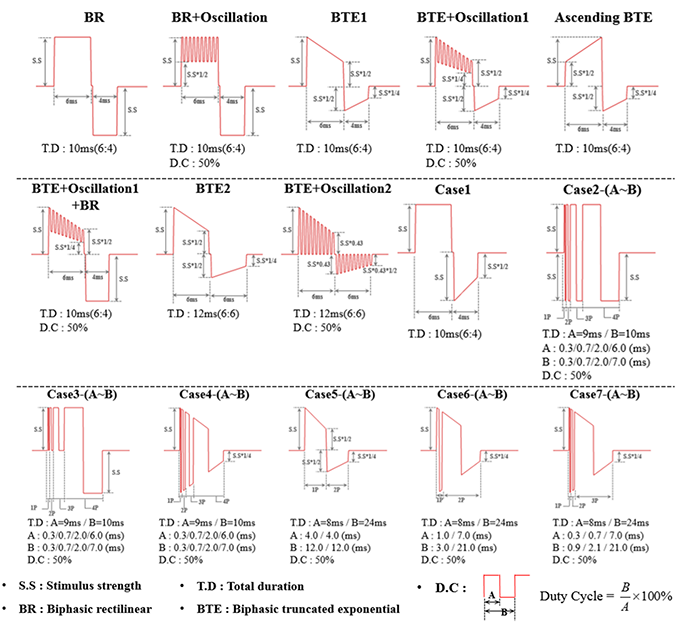
Evaluate efficient waveforms
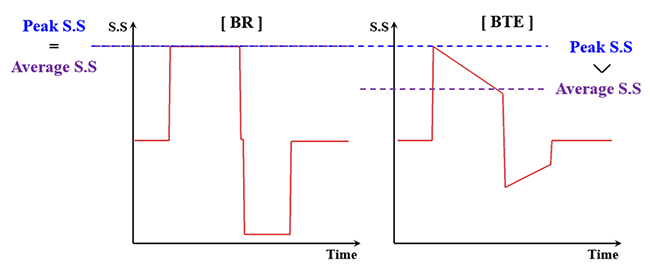
- Peak stimulus strength is the maximum amount of stimulus strength seen by the heart
- Average stimulus strength is the mean average amount of stimulus strength seen by the heart over the duration of the shock
→ Efficient waveform is terminated at Low-peak S.S & Low-Average S.S
Result
Necessary stimulus strength to termination


Conclusion
- This study is related to defibrillation simulation model development considering level of organ.
- Before 3D simulation of organ level, defibrillation simulation imitating 2D cardiac tissue was implemented.
- As a result of simulation, oscillation waveform is efficient in defibrillation in terms of average stimulus strength.
- And ascending BTE waveform is efficient in defibrillation more than BTE1 waveform.
- Result of multi-pulse waveform simulation(case2,3,4,6,7) is a limit to detecting the efficiency of the waveform. Therefore, additional simulation is required.
- In the defibrillation waveform simulation, evaluation standard of efficient waveform is not specific. So specific standard is required.
- And this study is just 2D simulation, so 3D simulation is required.











